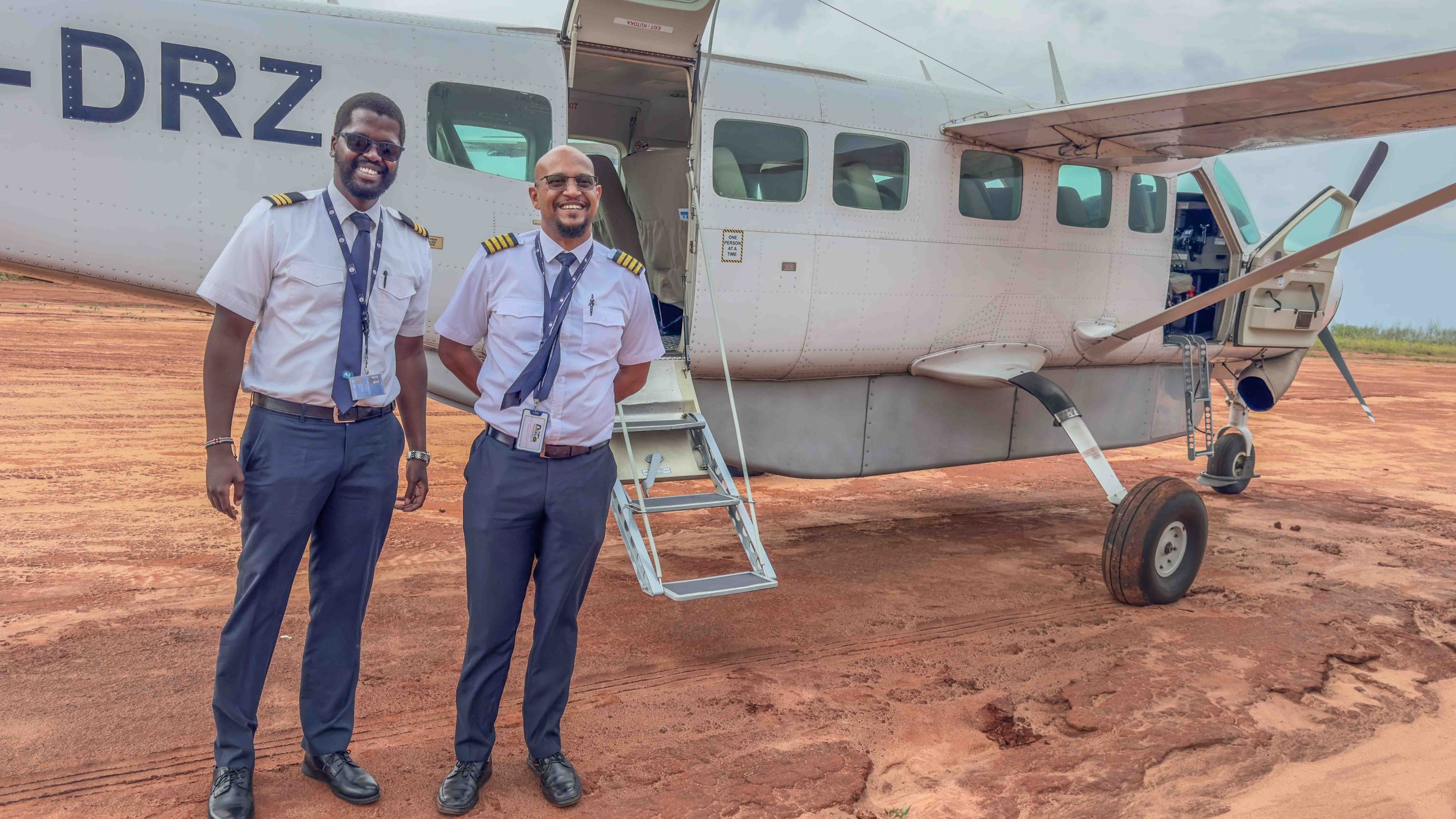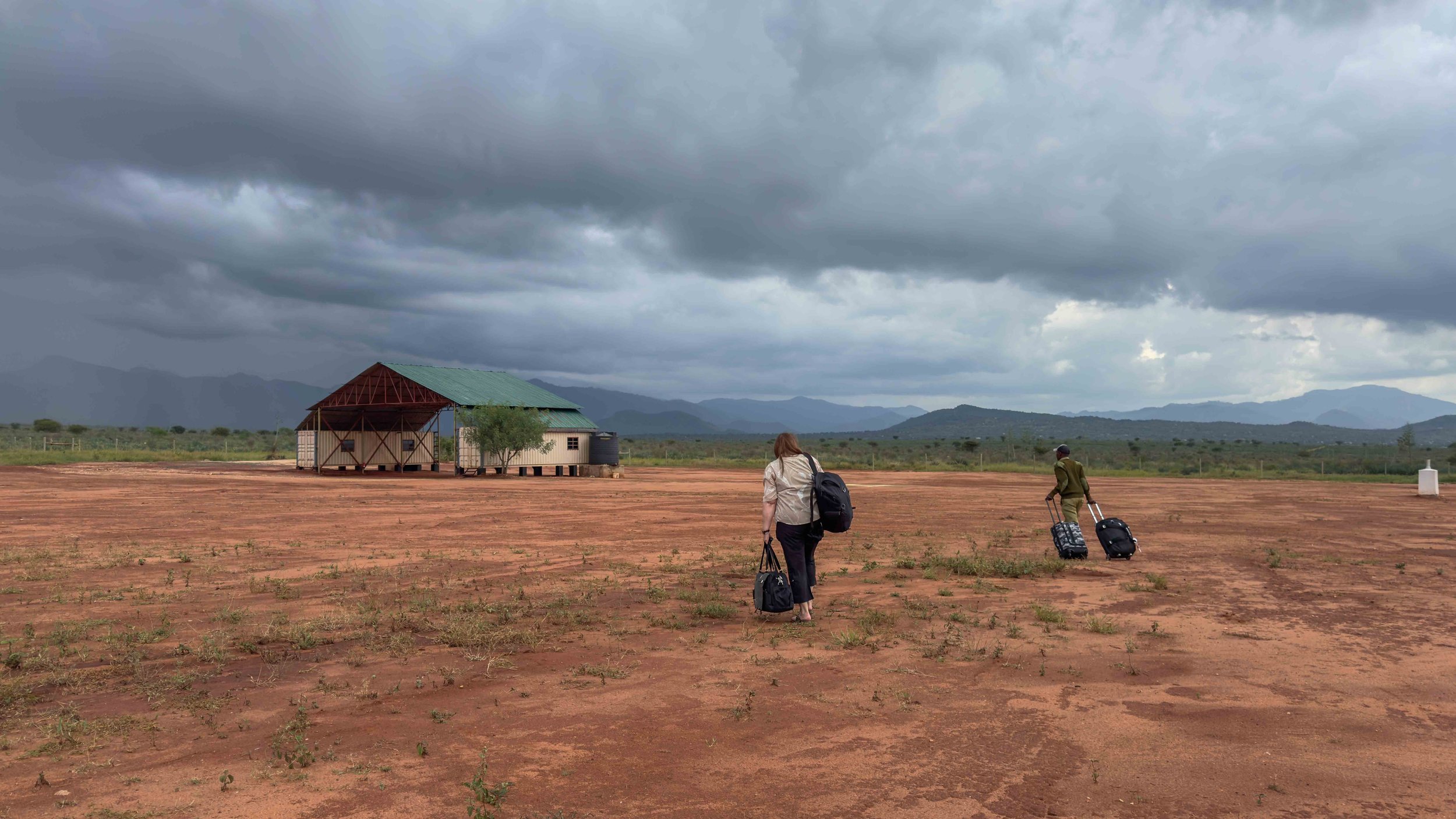Hakuna Matata
We travel, initially, to lose ourselves; and we travel, next to find ourselves. We travel to open our hearts and eyes and learn more about the world than our newspapers will accommodate. Pico Iyer
“You’re the only passengers on the plane. There’s a storm coming and the pilot would like to leave early. Are you willing to go now?” “Sure!” Cathy and I replied. We were eager to get to our destination, Lumo Community Wildlife Sanctuary on the edge of Tsavo, Kenya’s largest National Park.
When I settled on my safari dates last fall, I called my friend Cathy, hoping I could persuade her to join me for 6 days in Tsavo National Park. Cathy was already planning to be in Kenya with her cousin and his wife the following two weeks in February. It was an easy sell. Cathy is a great safari companion. She loves wildlife photography, rolls with the inevitable snags of travel, is comfortable with silence and, like me, Cathy never has enough of Africa.
We boarded the twelve-seater plane with two pilots and took off ahead of time as the skies darkened above Nairobi’s Wilson Airport. We flew southeast towards Kenya’s beautiful Taita Hills and Tsavo, a wilderness area the size of Switzerland. Just as I was thinking we’d been in the air for an hour and should be landing soon, the pilot turned and said “The weather is closing in. It’s too risky to land on the Lumo airstrip. We are diverting 20 miles to the north.”
I looked out the window at a vast expanse of green rounded clusters with long swordlike leaves. Are those pineapples? I wondered.
We touched down on the iconic red earth of the region and taxied to an open area with two structures. The pilots hopped down and opened the door at the back of the plane. “Where are we?” I asked in amazement. “This is a private sisal plantation,” replied the pilot as a uniformed security guard headed our way.
Sisal Plantation
“Can you give me the location so I can contact my guide who is waiting for us at Lumo?” I asked, trying unsuccessfully to reach Pilipili on WhatsApp. Noticing I was getting nowhere, the pilot offered to call Pilipili on his phone. A one way conversation ensued in rapid Swahili.
Where are we?
“I told him where we are,” said the pilot anxiously looking skyward. “I’m sure he’ll find you. Ah, do you mind, ah, if we go now? This airstrip will turn to mud, and we’ll never be able to take off if the rain comes.” Cathy and I looked at each other. “Oh, sure, we’ll be fine” I said feigning nonchalance. Neither of us wanted the unspoken alternative of flying back to Nairobi. The pilots posed for a quick photo, leapt into the plane and took off immediately, leaving us alone in the middle of 5,000 acres of one of the largest sisal plantations in the world. We had been delivered to our destination, ah well … close to our destination ….. we hoped.
“This is interesting,” I said to Cathy as we headed to a structure that looked like it was built as a lounge for VIP’s flying in on private planes to inspect the estate. “Do you have a signal?” “No, do you?” “No.”
Photo Credit Cathy Langen
As the minutes ticked by, we watched the mountains slowly disappear under a blanket of ominous black clouds. A single row of bamboo poles above us provided shade but no protection from rain. We were about to get soaked.
The security guard reappeared, grabbed our bags and motioned us to follow him to the hangar on the far side of the airstrip. We obeyed, grateful for his intervention. He heaved our bags into a storage container that made up one wall of the building and we clambered in.
Seconds later lightening illuminated the darkened sky followed by loud cracks of thunder and buckets of rain. A shallow pond grew in the space under the hangar’s roof. “Take my picture, Ryan (our travel agent) won’t believe this,” I said to Cathy. There was nothing to do but wait and hope Pilipili would find us.
Photo Credit Cathy Langen
Thirty minutes later we heard the guard shout at the gate and Pilipili pulled up outside our shelter. “Jambo!” he grinned. “Karibu (welcome to) Tsavo!”
The value of an air ticket from Nairobi to Lumo? $260. The value of an ESim card for 30 days in Kenya? $34. The value of a trusted Maasai guide and friend? Priceless!!!
Travel in Africa has taught me many life lessons. There is freedom in letting go of control and trusting the process. Hakuna matata – no worries they say, it all works out in the end, especially when you have a great guide.
Support Conservation











